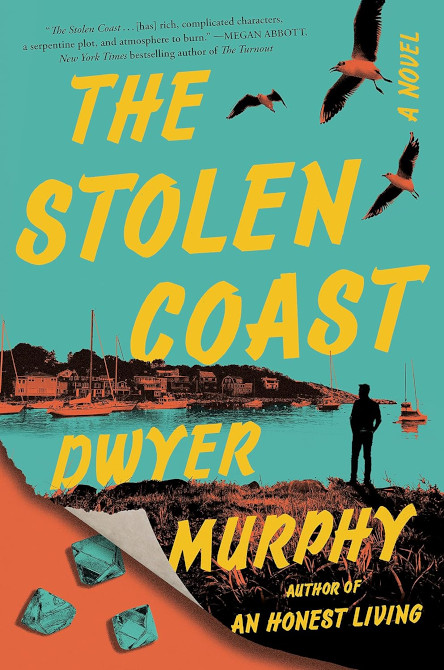A Diamond Heist Goes Awry in ‘The Stolen Coast’

The Stolen Coast
By Dwyer Murphy
Viking
288 pages
In The Stolen Coast, a new crime novel blurbed as “neo-noir,” author Dwyer Murphy resurrects the mood of that literary genre sparingly but effectively. Early on, the narrator describes the environment in and around the seaside village of Onset, Massachusetts:
“Sometimes it seemed like just about everyone you saw there was on the run from something. In other moments, stasis hung over the town like a cloud of gas and you would see the same faces night after night, and it felt like low tide would go on forever and the wind would always die in the flats.”
Not quite Raymond Chandler (“one of those hot dry Santa Anas that come down through the mountain passes and curl your hair and make your nerves jump and your skin itch”) but you get the idea.

Jack Bettancourt, a young Harvard-educated lawyer turned criminal, is both a complicated and implausible primary character. Rather than pursue a career in law, he has opted to follow in the family business as a “ferryman”—that is, aiding people with a need to disappear off the grid succeed in their quest. The business was founded by Jack’s father, an ex-spy, and father and son each exemplify what Liam Neeson (in another context altogether) describes as “a very particular set of skills.”
As The Stolen Coast gets underway, we get a look at events in Jack’s daily life, generally involving the retrieval and subsequent hiding of (mostly bad) people, in various cottages along the beach left vacant during the off-season. Things are running smoothly, more or less, with enough time left over for his greater passion, a weekly pickup basketball game. Then, from out of nowhere and in true noir fashion, Jack’s old flame Elena, absent from his life for seven years, abruptly reappears.
The thing is, Elena’s just as “bent” as Jack is. Soon after stepping blithely back into his world, she persuades him to drive through town to an old, abandoned house:

“She approached the house slowly, without care, as though it were her own … It was odd, watching her from that remove. It felt like a performance. A piece of theater. Like she knew that I was watching but was pretending not to in order to amplify something—the tension or the confusion. After working the lock for a minute, she let herself inside. Her movements seemed very deliberate, then for a stretch of time she was gone; disappeared. Like she had never come back. Seven years away and counting.”
As with any novel steeped in noir, the narrator’s voice is everything. Does Jack’s voice, as shown here sounding somewhat detached from his surroundings, persuade us of the authenticity of his story? Yes, some of the time, while at other moments he comes across as much too naïve for this crooked line of work.
Even more oddly, though we follow Jack’s point of view throughout, there’s a critical moment midway through the story when he delivers a client to a supposedly safe location, and a gruesome act of violence throws everything out of whack. But the “I” describing the incident seems to recede into the foreground. Jack takes no action in response to the violence, nor does he demonstrate much concern about a job gone terribly wrong.

Things aren’t helped by a fair amount of aimless and semi-expository dialogue between Jack and Elena, and between Jack and his pickup basketball friends. In a story where the stakes are presumably right up there in the realm of life and death, the novel’s emotional temperature remains stubbornly flat, devoid of much passion or style.
Soon, Elena draws Jack into a plan to steal raw diamonds, valued from between $3 million and $180 million, from one of her business associates. Although every instinct warns him away, Jack agrees to take part and from there, The Stolen Coast picks up pace. Dwyer Murphy captures the disturbing atmospherics of this beachfront town, where considerable chicanery takes place behind the scenes. But there may not be enough behind-the-scenes “stuff” about the family business or the botched diamond heist to convince and satisfy every reader.
Author Bio:
Lee Polevoi, Highbrow Magazine’s chief book editor, has just published a novel, The Confessions of Gabriel Ash.
For Highbrow Magazine
Image Sources:
--Viking
--Pixabay (Creative Commons)































































































































































































































































































































